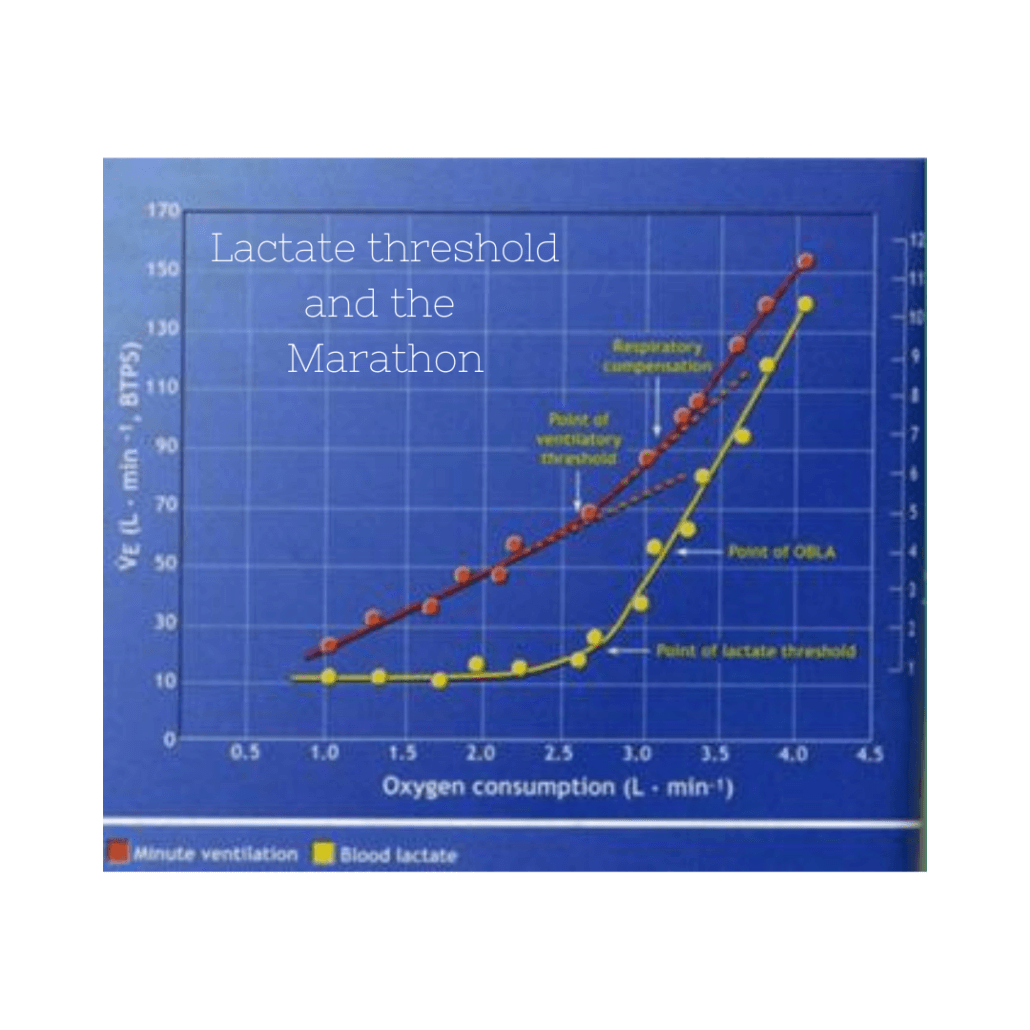Does the 80/20 rule work for marathon training?

Podcast: Play in new window | Download
So, I am cruising the social media and lately, I’ve been seeing a lot about the 80/20 rule in running. As I write this, fall marathon training is “heating” up and so it makes sense that this makes the round again. So, I wanted to break this down, how we got to this point and some practical advice around the issue.
What does 80/20 actually mean?
At its basic of definition, it means that 80% of your running is “easy” and 20% of your running is “hard”. That seems awful subjective, huh? What’s easy for some, is hard for others. So, how are we defining easy and hard? When you look at it’s most recent popularity, you have to look no further than Matt Fitzgerald and his book, 80/20 Running. Matt uses Ventilatory Threshold and a fancy term, Respiratory Compensation Threshold. You may also see these labbelled as VT1 and VT2. Basically, you are using the “Talk Test” to determine intensity. VT1 would be where you see noticeable increase in breathing rate. VT2 would be where you can no longer trash talk your training partner and are limited to one or two words between huffing and puffing.
If you are looking at the figure above, you see a classic blood lactate level vs exercise intnesity chart. The harder you exercise, the more blood lactate increases and you reach certain thresholds. One of those byproducts is CO2, and our breathing rate increases to get rid of that. So, monitoring your breathing is a practical way to measure how hard you are working, in conjunction with other data.
When looking at the 80/20 rule and the visual of the above figure, what’s the biggest thing that sticks out to you? Right, that it’s a lot of very easy running and a little bit of pretty darn hard running! You have a bunch of running in the middle that is pretty much left alone if you are following the philosophy to the letter. What you are left with is something called polarized training. Many of you are stsarting to connect the dots here with other terms we have heard along the way, like the hard/easy principle or hard days hard and easy days easy line of thinking. At the end of the day, it’s all related.
The question becomes at what pace or effort do these thresholds line up? For VT1, that’s going to be a pretty comfortable pace. That’s going to be anywhere from about 50-75% of your VO2max. That’s a big range! For a new runner, it’s going to be closer to the 50% mark and for highly trained runners, that’s going to be closer to that 75% mark. I’d say most recreational runners who are consistently running are probably around the 60% mark. That’s an easy pace, slower than your marathon race pace.
As far as VT2, that is the point where things start getting pretty tough. This is the point where lactic acid begins to accumlate at an almost exponential rate and you aren’t going to be able to sustain that pace for long. I have always known it as the pace you can hold for about an hour, but see 30-60 minutes in some publications. Like VT1, it’s going to be dependent on training level. A newer runner won’t be able to go a full 60 minutes at that pace, whereas a highly trained runner get just about get to a half marathon at that threshold. For recreational runners this is probably around 10km-15km race pace. 20km pace for a really solid male distance runner. Women are “quickly” reaching that point as the women’s world record is now under 1:03 for the half marathon.
How are we measuring 80/20?
From my understanding, the original research measured the breakdown in terms of number of workouts. I’ll be honest, I don’t know if that was per seven days, 10 days, 14 days, or 21 days. If it were 10 days, it’d be easy, 8 workouts easy and 2 workouts hard. If it’s anything else, then you get into partial workouts and that’s not exactly practical. The most common ways now are by training volume (miles or km) or in minutes.
What about that middle area?
I don’t want to spend a lot of time discussing whether the 80/20 principle is valid. That’s not really the debate, for me. I think HMM and Cumulative Fatigue are all along the spectrum of the 80/20 line of thinking. Where the big difference lies is that big ole elephant in the room- that “zone 2” area. To me, as a marathon and half marathon coach, that’s a big problem. That’s exactly where marathon and half marathon pace lie for all of my athletes! From my perspective, that’s where the idea of a pure 80/20 model gets cloudy and loses some practicality for my runners.
In my research into other resources on 80/20, I was led to a study that compared recreational 10km runners by following the true 80/20 ideals vs another group who utlized the Zone 2 area. This article was great because it looked at a section of runners not often studied, tried to use for practical terms of volume, and opened my mind to some other thoughts.
Let’s look at some of the basics of the study
Two groups of similar runners in two groups. One group utilized polarized training. The other group also utilized training in what they described as “between the thresholds.” They both did the same base training and then the same number of weeks in their designated groups. They both ran 5-6 days per week and they both ran on average 50 km per week and peaked at about 70 km per week. Group one acquired a training distribution of 75% in Zone 1, 5% in Zone 2, and 20% in zone 3. Group two acquired a distribution of 45%/35%/20%. Each program had two “hard” days per week. They also did the same strength training. In Group One, 10k times went down from 39:18 to 37:19. In Group two, the times went from 39:24 to 38:04. Which wasn’t found to be statistically significantly different. Now a few things, the time improvements in Group One came out to about 5%, whereas in Group Two, it was about 3.5%. While not statistically significant, the authors did some other fancy analysis and found that the zone 1 training was more likely to be the factor for improvement. I admit I don’t totally understand it. But to me, that is not the focus of that.
To me, there’s some other details that are buried in here and if pull them out, we can really take a better look at their info vs. how people actually train. In group one, if they were doing 20% of their volume in the fastest zone, that’s anywhere from 10k to 14k per week at paces that are close to 10k pace and fasster. If training for a 10k, that’s plenty and I don’t see any issue. This is especially true because there’s only 3-4 more days they were running and would make sense that they were easy. There was no word on if they did a longer run in there?
However, if you look at the second group- you still have that 10-14 km in there weekly schedule, but then they also have 35% of their volume coming from that dreaded Zone 2! That’s 17-24 km at paces anywhere from marathon to let’s say 20km pace! For one, that’s a huge range, and two, who actually does that, especially for a 10k training plan? I’ve looked at a lot of different coaches plans and I can’t think of any 10k plan that incorporated that. I get blasted for our 10k and half marathon plans all the time, and they don’t even approach that. So, I am left to believe that Group 2 was probably pretty tired by the end of that study and are probably thankful that they finished.
My overall takeaways
For shorter race distances, the polarized works well. I believe mainly, that this is because your race distance lies in the 20% zone. So, you get lots of work at and around your race pace. You also will get more work per week than what your actual race distance is. For example, if you run 50 km per week and follow the 20% rule, then you get 10km per week around race pace. If you are running a 10k, this is the distance you’d race. It works out very well. Then, the rest of your time is spent recovering from that fast work and building your general aerobic fitness and endurance. The whole process works out very well!
My other take away is that at some point you will have to get more specific to the group that you are working with. Thresholds shift as fitness changes or as running ability changes. Absolute volumes will shift as volume increases. Is there a cap? For example, If I am running 100 miles a week, do I want to do 20 miles per week at 20km pace or faster? Probably not. I think you have to one, have some leeway in how far you extend your Zone 1 and I aso think that you have to break down your zone 3 even more specifically. For example, out of that 20% of hard running, how is that broken up? Is it all at that VT2 level? Is some of it faster than that. Just keep that in mind as runners move from being a beginner to novice, to more advanced. Your idea of that 20% has to change and become more specific.
How does that transfer to marathon training?
I eluded to it before, but I think the 80/20 rule of training gets cloudy when training for races where you’ll be racing in the Grey Zone (Zone 2, whatever you want to call it). During the early parts of an HMM marathon plan, the primary focus is a little bit of speed (hard) and some shorter marathon pace (zone 2). So you are right off the bat, the 80/20 rule gets tossed. It might be 80% easy, but the 20% “hard” would have to include everything from marathon pace up. And honestly, this might be ok, because marathon pace early in a training segment, might be closer to threshold pace (VT2) than it is to VT1.
However, once you get into the race specific stretch of a plan, are we doing anything that’s faster than VT2? In the traditional sense, no. If you were to break down the classic HMM plan, you would be pretty close to 60 miles/week. Out of that 60, you’d be running 6 miles worth of Strength and 8-10 miles of marathon pace work. This would all be surrounded by a long run and easy running. So, including easy runs, warm ups, cool downs, and long runs, your total EASY volume would be about 75-80%. However, the other 20% is really more in the Zone 2 and not the polarizing Zone 3. However, like the 5k and 10k training, that 20% is race specific. That’s where I think you have to look at what your definiton of hard is because I think when you talk to anyone doing one of these marathon plans, they would say that the strength and the tempos are hard!
What about half marathon training?
I don’t want to go too much into it in this blog. I think it would probably require it’s own thoughts and it presents it own unique scenarios. However, regardless of whether the person is a 2 hour half marathoner or a 1:15 half marathoner, some of the same situations will arise. If you follow the true definition of 80/20, then you really won’t get any race pace work in. Yes, you can get Threshold work in, but as far as race pace specific work, that would fall into the upper portion of the grey area of training. That 20% might have to include everything from half marathon pace and faster. In this training, you’d probably avoid doing much, if any, at marathon pace. This would keep the percentages at 80/20, but the 20% hard would not be above VT2.
Final takeaways
The 80/20 principle is great for keeping a separation from easy to hard days. However, in the truest sense of the idea, you are left with a giant grey zone that is supposedly a no-fly zone. The problem I see with that, is that training adaptions don’t occur just at the two thresholds and it doesn’t offer guidance for races where your race pace will be smack in the middle of that gray zone. So, for me the 80/20 rule isn’t polarized based on VT1 and VT2, per say, but rather what distance you are racing. In admittance, I got to this point in writing and I did see another article with Matt Fitzgerald discussing that during a marathon segment, miles at marathon pace would be considered “hard” so I would say there is probably some agreement on this idea that the 20% hard shifts with what you are doing. Where I think I struggle with the setup is that marathon pace is described as a moderate pace. I would argue that most of my athletes and myself would not consider marathon pace (and definitely not strength pace) to be a moderate pace. I think if you are in a situation where you would consider that a moderate pace, we need to look at your overall training, goal time selection, and training volume.
Overall, don’t make it harder than it needs to be. Keep your easy days easy and keep your hard days in check for what the purpose of the workout is. Keep the majority of your training on the easy side of things and don’t get caught up in setting easy run bests. If you are that competitive, shift your focus to how close you come to the prescribed pace/effort and not just how fast you can do it. This sets you up to be a more consistent runner and probably a better racer. It also doesn’t force you into absolutes, when there doesn’t need to be.
Need a training plan? I have over 200 training plans for race distances from 5k to 100 miles! Plans range in the number of weeks to the amount of weekly volume you are looking to achieve. These are as close as you can get to having a custom training plan. Plans include structured workouts, daily paces based on your goals, and calendar sync. Plus, access to the LHR community so you are never left guessing. Check out the plans and more information by clicking the button above. Use code RUNPLAN15 for 15% off your first purchase.





This posting in FB is a video. I only could find the reading version. Am I looking in the wrong place? Just asking as i like to listen while I drive.